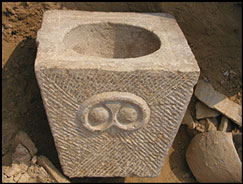Article contents
Cereals, soils and iron at Sanyangzhuang: Western Han agricultural production in the Central Plains
Published online by Cambridge University Press: 12 June 2019
Abstract

Archaeological research on food-production systems has focused heavily on the origins of agriculture and animal domestication; the agricultural practices of early states are comparatively less well understood. This article explores archaeological evidence for crop cultivation, field-management practices and the use of farming implements at the Western Han (202 BC–AD 8) village of Sanyangzhuang in Henan Province, China. The authors analyse the implications of these practices for the newly developed smallholder mode of production. By combining diverse strands of evidence, this investigation provides new insights into the status of agricultural production in the Central Plains during the Western Han Dynasty.
- Type
- Research
- Information
- Copyright
- Copyright © Antiquity Publications Ltd, 2019
References
- 6
- Cited by


